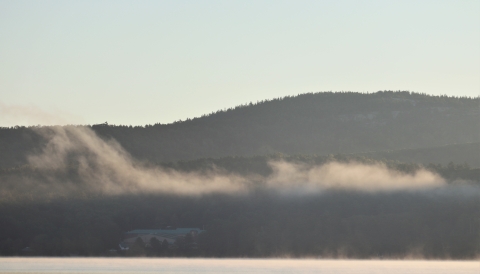About Us
The state of Maine hosts exceptional biodiversity due to a number of factors, including diverse geographic and geologic features located in a transition zone between boreal and temperate habitats and species assemblages. Maine is over 90% forested (17.7 million acres) and is the most extensively forested state in the United States. In addition, Maine also contains some of the most significant grassland, barrens, and agricultural lands in the Northeast. The state covers a wide range of latitude (320 miles north to south), with natural communities and plants characteristic of southern Appalachia found in the south transitioning to boreal communities in the north and subarctic communities at the highest elevations.
Due to this diversity in habitat and abundance of water resources including lakes, rivers, streams, ocean coastline, bays, and inlets, the state is home to a wide array of plant and wildlife species. Located in East Orland, ME, the Maine Ecological Services Field Office is centrally located within Maine to protect and conserve the wildlife species and their habitat across the entire state. Conservation priorities for the Maine Field Office include Atlantic salmon protection and recovery, aquatic connectivity and fish passage fish passage
Fish passage is the ability of fish or other aquatic species to move freely throughout their life to find food, reproduce, and complete their natural migration cycles. Millions of barriers to fish passage across the country are fragmenting habitat and leading to species declines. The U.S. Fish and Wildlife Service's National Fish Passage Program is working to reconnect watersheds to benefit both wildlife and people.
Learn more about fish passage at hydroelectric dams and transportation projects, and piping plover and roseate tern recovery. While other USFWS offices in the state also work on a number of restoration and connectivity projects, the Maine Field Office serves as the Ecological Services office for the state and consults with other federal agencies on threatened and endangered species and their critical habitat protected under the Endangered Species Act.
Staff at the Maine Field Office have expertise in Atlantic salmon, Canada lynx, shorebirds, bats, and turtles, and serve as FWS species leads for the Atlantic salmon, Rusty patched bumble bee, and Furbish’s lousewort. Visit our What We Do page for additional, detailed information on the programs, conservation work, and projects our staff is involved in.
Our Mission
The mission of the Maine Ecological Services Field Office aligns with the overall mission of the Service – to work with others to conserve, protect, and enhance fish, wildlife and plants and their habitats for the continuing benefit of the American people.
Our History
The Maine Ecological Services Field Office officially opened its doors in 1990 in Orono, ME. In 2016, the Maine Field Office made the move from its original location to co-locate with the Craig Brook National Fish Hatchery (CBNFH) on Alamoosook Lake in East Orland, ME. The vital conservation work completed out of the Maine Field Office is tied closely to the stocking efforts of CBNFH, Green Lake National Fish Hatchery, and the other offices in the complex and region.




